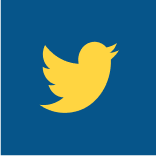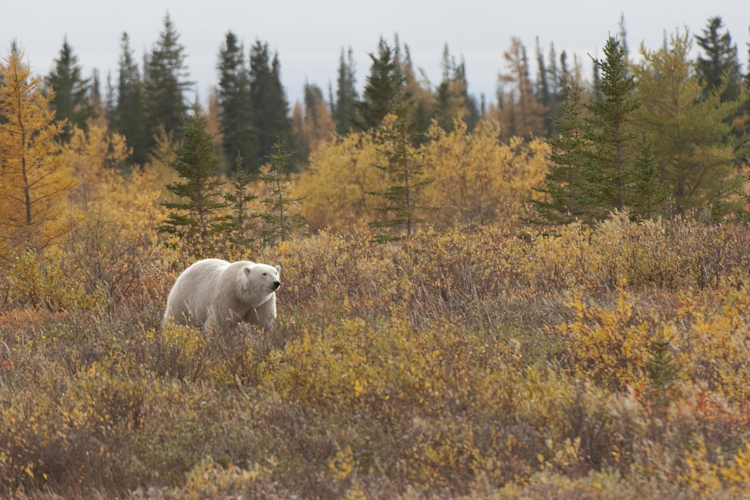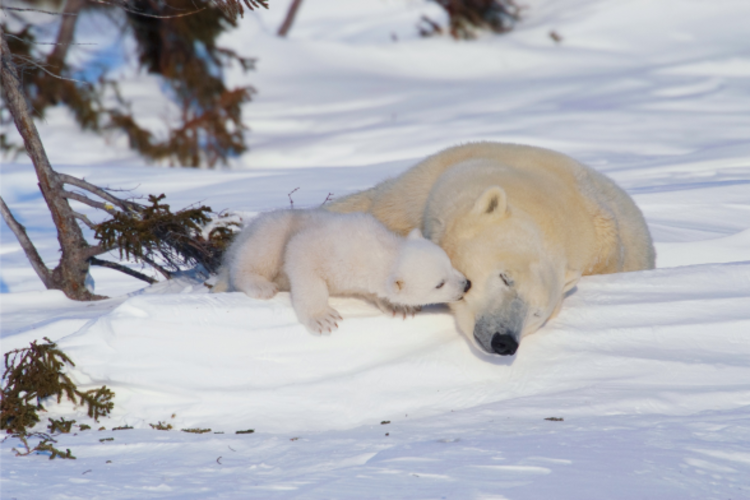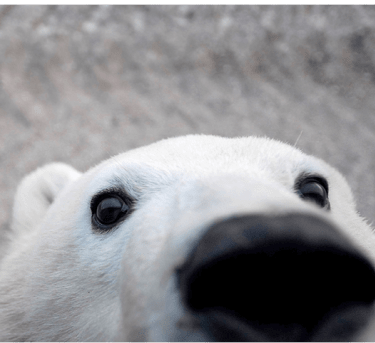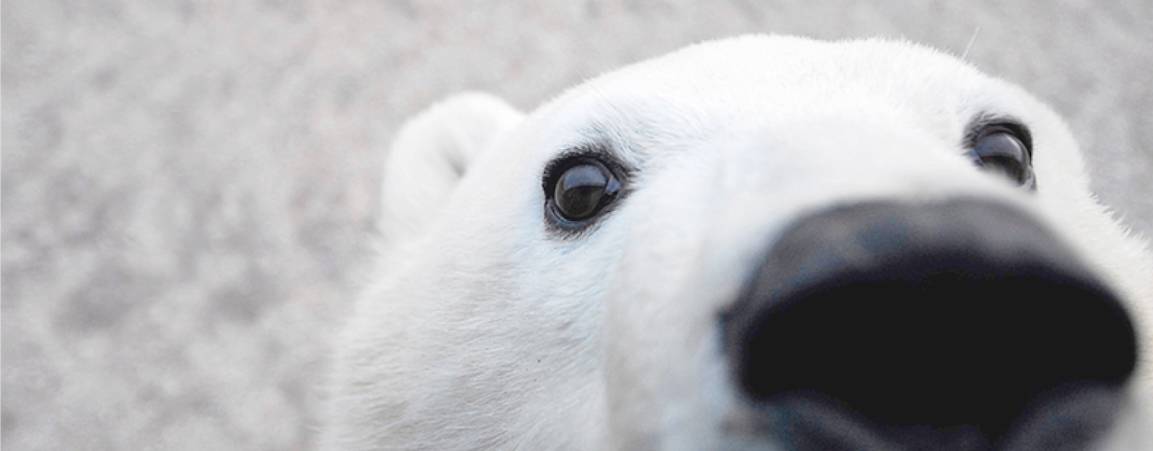You may have seen spectacular videos of polar bears from above, taken with drones. But beware — if not done carefully, this kind of filming can stress out bears and put drone operators in danger. Before you launch a drone in polar bear habitat, make sure you follow these guidelines to keep the bears — and yourself — safe.
Erinn McNicol, Senior Manager of Communications and Raymond Friesen, Research Support Specialist explain why Polar Bears International created drone guidelines specifically for polar bears.
Why did Polar Bears International create these drone guidelines?
Erinn:
Polar Bears International has long supported responsible tourism to view polar bears and visit the Arctic. Seeing polar bears in the wild and learning about where they live and the challenges they face can inspire people to care and get involved in their conservation. But we also have to make sure the bears aren’t disturbed in a biologically meaningful way, and that people and bears remain safe.
As the social media world has become noisier, we have seen some photographers and filmmakers in the wildlife sphere push the boundaries a little too far to get a viral shot. With drones becoming a common tool for amateur photographers, the average tourist may not be educated on ethical filmmaking practices and try to emulate their favorite shots they’ve seen from other creators.
Ray:
After engaging with many guides, photographers, and researchers, we were asked to explore whether responsible drone operations around polar bears are truly possible. In the absence of clear guidance, interactions between drones and bears have varied widely, from reckless to perfectly responsible.
It’s important not to desensitize polar bears to drones. We still don’t fully understand how drones might affect bears, nor how they could be used as effective deterrents in the future. Establishing safe and responsible practices now will help protect both bears and people while keeping future opportunities open.
Where it’s legal, it is possible to film bears safely and responsibly with a drone, if you follow the right guidelines.
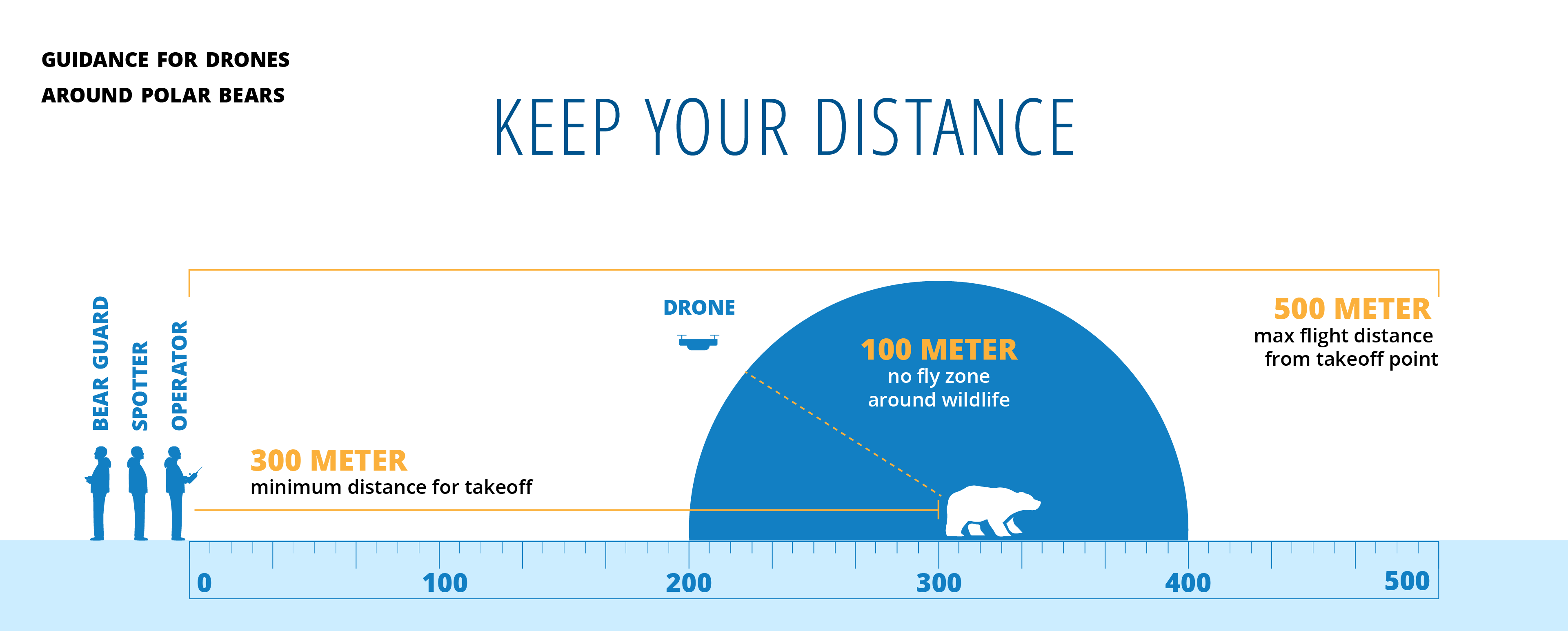
Have there been any incidents you’re concerned about?
Erinn:
We know that wildlife photographers care about the well-being of the species they film, and don’t want to cause harm. And we don’t want people to put themselves in danger either or break any laws.
We’re concerned about any drone usage that causes a bear to waste energy or react in a manner that puts them in a dangerous situation with other bears or humans. Running away is an obvious sign, but we also look at more subtle signs of stress, like vocalizing or yawning. It’s also important to avoid bears that are vulnerable, for example nursing, feeding, skinny or accompanied by young cubs.
Ray:
Drone operators, pro or amateur, share the responsibility to keep wildlife safe. Pros especially. If you're skilled or well-known, your images set the tone for what’s seen as acceptable. If an image could seem risky, it’s on the pilot to share how it was done safely and explain the boundaries / ethics involved. We as viewers also need to hold them accountable. There are boundaries that shouldn’t be compromised regardless of your experience.
Great shots should never come at the expense of the animal. Respect comes first, always.
Operator safety is important too, of course. If you’re operating on the ground, it’s important to have at least two people with you. One to watch the bear for signs of disturbance, and someone with deterrent tools who’s scanning the area for other bears and wildlife.
Additionally, we need to think about protecting and respecting everyone in these places, not just those directly involved with the drone operation. Other wildlife viewers, operators, and nearby communities are all part of the equation.
And of course, all drone operators should know and follow the laws and regulations where they plan to film, including any requirements to check with local air traffic controllers In parts of the Arctic, there are frequently low-flying aircraft and protected area restrictions.
Erinn:
We’re hoping that these easy-to-use guidelines will encourage ethical behaviours and reduce disturbance not just to the bears, but to other wildlife and other people who have come to enjoy this unique place.
What’s next for these guidelines?
Erinn:
We work with a network of over 400 professional Arctic guides. They’re at the forefront of polar bear conservation outreach, and they’re most likely to encounter drone usage in the field. We shared the guidelines with them first, and their input will help us refine future versions.
You can find the full guidelines on the Polar Bears International site: pbears.org/drones.



